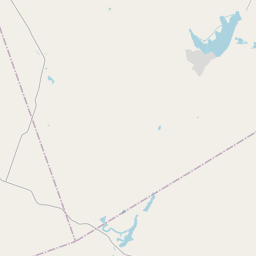Dr. James Lee Dickey







Physician, humanitarian, civil rights advocate and concerned citizen Dr. James Lee Dickey (d. 1959) had a profound effect on the quality of life in his adopted hometown of Taylor. Born in McLennan County in 1893, he attended Waco public schools and Tillotson College, Austin. Military service in World War I interrupted his training at Meharry Medical College in Nashville, Tennessee, but upon graduation in 1921, he returned to central Texas to help his widowed mother raise his eight siblings. He settled in Taylor with his wife, Magnolia (Fowler) (1902-1959), as the city's only African American doctor at the time.
Dr. Dickey worked hard to address the public health needs of Taylor, calling for improvements to the local water supply and heading a community effort against an outbreak of typhoid fever in 1932-33. A clinic he opened in a house at that time expanded to serve residents of the city and counties in the surrounding area. He developed programs for infant care and was instrumental in admitting African American patients to state tubercular clinics.
Dr. Dickey's advocacy extended beyond health care to education and civil rights. He worked for passage of school bonds and improvements, and led efforts for local recreational facilities and federal housing. He was also a founder of the Taylor Negro Chamber of Commerce and served as a trustee of Tillotson College.
For his efforts, Dr. Dickey received numerous awards and honors, including distinction by the Taylor Chamber of Commerce as Man of the Year in 1952. His greatest rewards, however, came through his lasting contributions to the citizens of Taylor. As he noted, "to live in the hearts of those we leave behind is not to die." (2006)
As one of the most visible programs of the Texas Historical Commission (THC), historical markers commemorate diverse topics in Texas history, including: the history and architecture of houses, commercial and public buildings, religious congregations, and military sites; events that changed the course of local and state history; and individuals who have made lasting contributions to the state, community organizations, and businesses.
In the late 19th century, Texas became known for its cattle drives, in which cowboys would move herds of cattle from Texas to railheads in Kansas and other northern states. The cattle drives were dangerous and difficult work, but they played a key role in the development of the American cattle industry.
The region was first settled by European pioneers in the mid-19th century. The establishment of Fort Tumlinson in 1839 provided protection to settlers, and the population grew steadily with the arrival of more immigrants in search of new opportunities. In 1848, the county was officially organized and named after Robert McAlpin Williamson, a judge and soldier in the Republic of Texas.
During the Civil War, Williamson County faced significant challenges. Many residents joined the Confederate Army, and the county became a hotbed of conflict due to its location on the frontier between Union and Confederate territories. After the war, the area was able to rebuild and experienced a period of economic growth, driven by agriculture, cattle ranching, and the emergence of small towns and rural communities.
In the 20th century, Williamson County continued to develop and adapt to changing times. The discovery of oil in the early 1900s brought economic prosperity to the region, and the county experienced a boom in population and infrastructure. Today, Williamson County is a thriving part of the greater Austin metropolitan area, known for its strong economy, vibrant communities, and commitment to preserving its historical roots.
Williamson County Timeline
This timeline provides a condensed summary of the historical journey of Williamson County, Texas.
- 1804 - The area that is now Williamson County is settled by Native American tribes, including the Tonkawa, Lipan Apache, and Comanche.
- 1836 - Texas gains independence from Mexico.
- 1838 - The Texas legislature establishes Williamson County, named after Robert McAlpin Williamson, a leader in the fight for Texas independence.
- 1848 - The Mexican-American War ends and the Treaty of Guadalupe Hidalgo is signed, officially establishing the Rio Grande as the boundary between Texas and Mexico.
- 1850 - The population of the county reaches 1,027.
- 1876 - The Texas State Capitol building is completed in Austin, which becomes the seat of government for Williamson County.
- 1881 - The International-Great Northern Railroad reaches Georgetown, bringing economic growth and development to the county.
- 1907 - The county courthouse, located in Georgetown, is completed.
- 1930s - The Great Depression hits Williamson County, causing a decline in the local economy.
- 1950s - The county experiences a period of growth and prosperity, with the population increasing significantly.
- 1990s - Development and suburbanization accelerate in Williamson County, with the county becoming one of the fastest-growing areas in the United States.